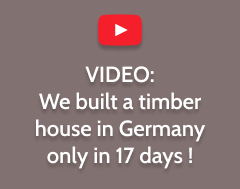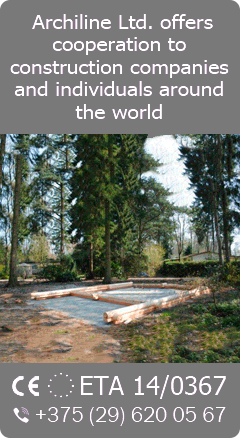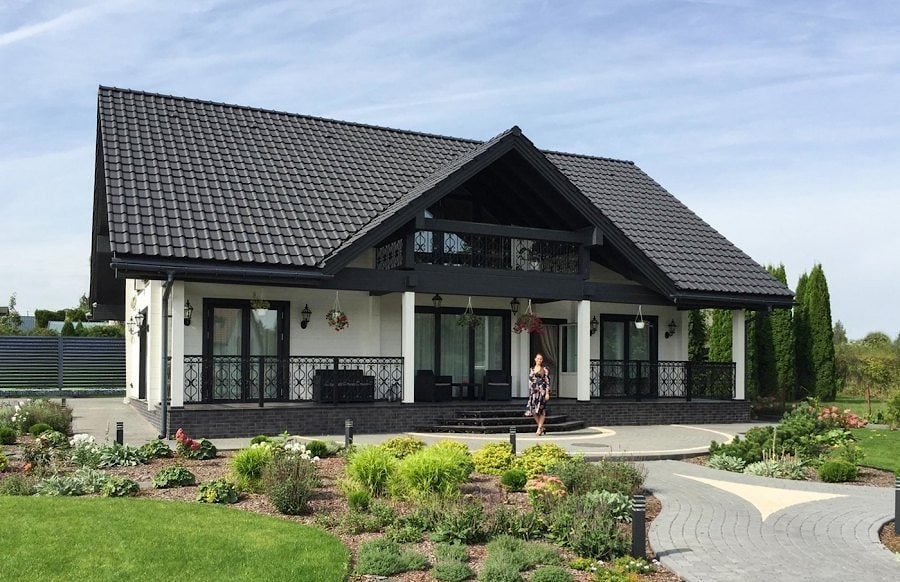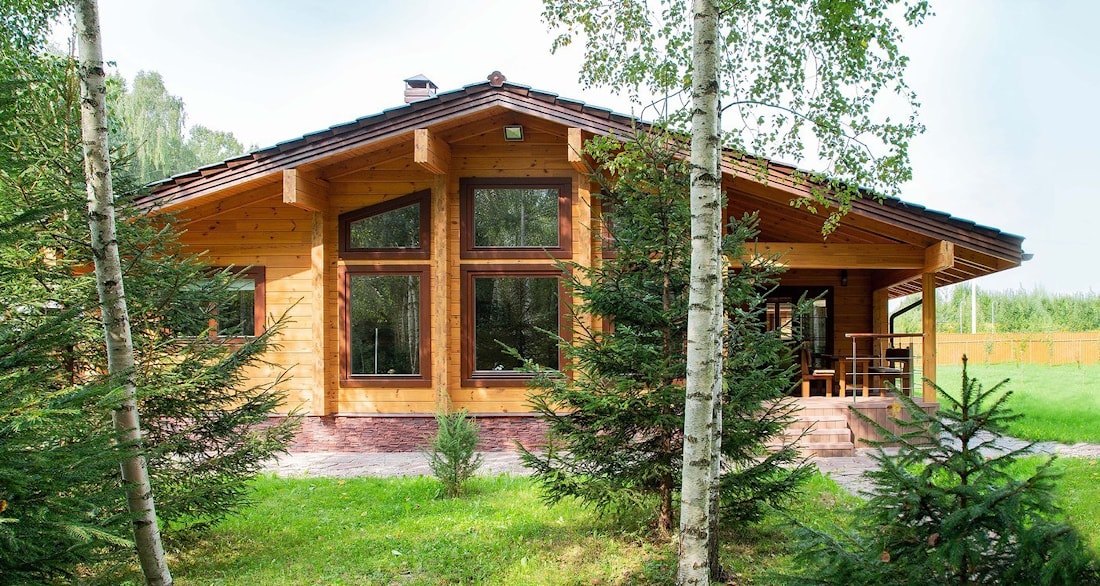≡ Menu
|
|
Glued Laminated Timber (Glulam), Cross-Laminated Timber (CLT), Laminated Veneer Lumber (LVL), Laminated Strand Lumber (LSL), and Parallel Strand Lumber (PSL) BUILDINGS OF THE FUTURE MIGHT BE MADE FROM …WOOD
Climate changes have become a battle for the future of human life on Earth. Unprecedented warming, rising seas, intensifying weather events, melting glaciers, worsening drought and longer wildfire seasons affect overall civilization. Considering the fact that 36 percent of total carbon emissions in Europe during the last decade came from the building industry, as well as 39 percent of total carbon emissions in the United States, the materiality of construction should be a priority for governments’ regulations in the future as measurements against global warming. The amount of CO2 in the atmosphere and the level of carbon emissions of the big economies across the globe are big issues that need to be solved with urgency in order to avoid larger, more frequent climate catastrophes in the future. The current regulation in several countries of the EU, which is incentivizing the use of renewable materials in buildings, is showing the direction the building industry in many other parts of the world should follow. And if these measures are adopted across the EU and beyond – if other countries start to follow this tendency as well – there will be significantly more wood in cities.  Nowadays the main building materials used in the construction industry are concrete, steel and timber. From the point of view of ecological sustainability, there are four important differences between these three materials: first, timber is the only material of the three that is renewable; second, timber needs only a small amount of energy to be extracted and recycled compared to steel and concrete (but the implementation of its potential is not as developed yet); third, timber does not produce waste by the end of its life since it can be reused many times in several products before decomposing or being used as fuel and; and fourth, timber traps huge amounts of carbon from the atmosphere – a tree can contain a ton of CO2 – and the carbon absorbed remains embedded as long as the wood is in use.  Though the use of wood is one of the most effective mechanisms to decrease CO2 emissions in building construction, there are other considerations that should be made at different scales of the built environment. City density, for example, is directly related to carbon emissions. It is a fact that dense cities are significantly more sustainable than sprawling cities; therefore one path to more sustainable forms of living might be the planning and regulation of compact wooden cities. But a dense city necessarily requires the construction of high-rise buildings, posing challenges to wood construction technologies, since wood has traditionally been used in small buildings where the structural demands are lower. When society first started creating commercial buildings, wood was the material of choice. It was plentiful, easily transformed from trees into structural members and it was sustainable, even if sustainability wasn’t a consideration at the time. Then came concrete and steel, and three- and four-storey office buildings gave way to 100-storey skyscrapers.  For decades, steel and concrete became so ingrained in commercial real estate, it seemed we would never go back. Yet wood, in all its forms, is making a comeback in mid- and high-rise buildings. Announcements practically weekly about tall wooden buildings, government grants and wood products research is changing perceptions about wood’s potential. Growing recognition of timber’s environmental benefits is fueling a renaissance in construction of multistory structures using wood. The 12-storey tower designed by Lever Architecture will become the tallest wooden building in the United States. The project in Portland, Oregon's Pearl District was named by U.S. Agriculture Secretary Tom Vilsack as one of two winners of the Tall Wood Building Prize Competition. The winners (the other is in New York City) will demonstrate the use of engineered wood products in high-rise structures.  In London, England, in Bergen, Norway, Sweden, Finland and Melbourne, Australia, the new buzzword is wood. In all, there are now about two dozen such buildings, all with wood at their cores. When designing a skyscraper, one doesn’t normally think of wood as the primary structural material—but that hasn’t stopped Vancouver, British Columbia–based architect Michael Green from redesigning New York’s famed 102-story Empire State Building as a timber tower. Sou Fujimoto Architects and Laisné Roussel have proposed a new tall timber development for Bordeaux, France. Proposed for Bordeaux's Gare Saint Jean neighborhood, Canopia would be located in a 17,000 sq m (182,986 sq ft) plot and comprise four buildings, with the tallest rising to 50 m (164 ft), making it one of the tallest modern wooden structures in the world. The design and build community, academicians, wood manufacturers and members of conservation groups are coalescing around a common theme: Wood is good.  Architects all over the world are discovering the many advantages of wood. "I think as cities start to create a carbon tax, there may be more pressure to consider wood as a common building material," said architect Jana Foit, of the international architecture firm Perkins+Will. Even though material innovation and new technologies have increased the durability of timber significantly, there are still people who argue that steel and concrete are much more durable and, therefore more sustainable. Melanie Sevcenko of the Guardian covers the story of the two towers being built in Portland and New York City. But the real fun is in the comments, which repeat, over and over, every misconception that there ever was about building with wood. The main concern related to deforestation as one of THE leading contributors to climate change. In fact, said Melanie, cutting trees while still alive and turning them into CLT would be a very good thing for the climate; we should be harvesting more, not less. The wood is sustainably harvested and trees are replanted which have a net positive effect on sequestering carbon, and leads to more trees, not fewer. Sustainable forestry practices can increase the ability of forests to sequester atmospheric carbon while enhancing other ecosystem services, such as improved soil and water quality. What about the gassing out of glue used to weld the plywood flats together. What goes into the glue? Most CLT is made with one-component polyurethane adhesives which are formaldehyde free. This system was developed in Europe where they have the highest standards for health. There are a number of reasons that people stopped building tall buildings in wood, but one of the main ones is that it was getting harder and harder to find the big first growth timber needed after it got logged out. Now, big beams are built up out of small pieces of wood, like these glue-laminated beams in Seattle's Bullitt Center, described as the greenest building in America.  There were also limits in height that you could go with traditional solid wood; the engineered stuff we are using today is a lot stronger and more consistent. There are a number of technological advances allowing engineers to specify wood structural components for buildings up to — for now — 10 to 15 storeys high. Foremost among those are the various kinds of laminated products collectively called "glulam" wood. Engineered wood products such as parallel strand lumber and cross-laminated, nail-laminated and glued laminated timber (glulam) are used. Glulam is typically used for the beams, while cross-laminated timber is typically used for floors and walls. Nowadays the most widely used wood-based products available on the market are Glued Laminated Timber (Gluelam), Cross-Laminated Timber (CLT), Laminated Veneer Lumber (LVL), Laminated Strand Lumber (LSL), and Parallel Strand Lumber (PSL). Gluelam is produced by gluing together individual planned timber laminations to form continuous timber members, creating a homogenous composite material without limitations of width and length. The individual pieces are joined with finger joints, so there are no potential weak points. Because of this, it is possible to standardize the quality of timber and develop timber structures with engineering precision, therefore providing an ecological alternative to steel and concrete.  One of the most exciting projects is Norway’s 14-storey Treet, or The Tree. It is a 62-unit building in which all structural components are made from wood, a mix of glulam and cross-laminated timber techniques. Treet embodies one immense benefit to wood construction: cost-savings due to pre-fabricating sections of the building and assembling quickly on site. And a significant contributor to using wood — the rise of engineered wood products such as glulam and CLT products — is giving wood construction an unexpected fringe benefit: reduced risk of forest fires. Unlike steel and concrete, which both contribute large amounts of carbon dioxide to the atmosphere through their heat- and energy-intensive production methods, wood stores carbon. Such a characteristic, called carbon sequestering, makes wood an environmentally sound choice in materials. One tonne of wood can, on average, prevent between 1.2 and 1.8 tonnes of carbon dioxide from being released into the atmosphere.  Archiline Log Houses, whose activities are connected with the design, production, construction of wooden houses from profiled laminated veneer lumber and logs, uses pine from the Vitebsk region - environmentally friendly and a perfect building material for construction of houses from glued beams. The most advantageous quality laminated board lie in the fact that, in contrast to the massive homogeneous wood, the composite provides the ability to obtain a product with the specified quality of strength, appearance and dimensions.  Engineered wood takes small wood fibres and manufacturers them into beams and joists and studs far stronger than whole wood. But aside from that added strength, the wood used can be harvested from diseased wood. Clearing forest floors of such wood removes an excellent source of kindling to fuel raging forest fires. The last word on wood goes to London’s Andrew Waugh: "If brick was the Victorian age and concrete was the 20th century, the 21st century belongs to wood." Look more:You can see a video-review of the wooden house “Mirage”:You can have a look on 3D-tour of the wooden house «Mirage»:
Wooden house "Mirage" from profiled glued timber 99m2We speak English, German, Turkish, French and Russian +375298-06-05-67 -- WhatsApp, Telegram, Viber Look more: Wooden house made of glued laminated timber "White House"Look more:You can see a video-review of the wooden house "Mirage":Wooden house "Mirage" from profiled glued timber 99m2If you want to buy glued Laminated Timber (Glulam), Cross-Laminated Timber (CLT), Laminated Veneer Lumber (LVL), Laminated Strand Lumber (LSL), and Parallel Strand Lumber (PSL) , you can:
Call: More from section Glulam |
|
© 2026
ArchiLine Wooden Houses
114-49, Necrasov str., Minsk, Republic of Belarus, 220049
The site is powered by Nestorclub.com google.com, pub-6447061049723989, DIRECT, f08c47fec0942fa0 | |
 Good Wooden House since 2004
Good Wooden House since 2004











